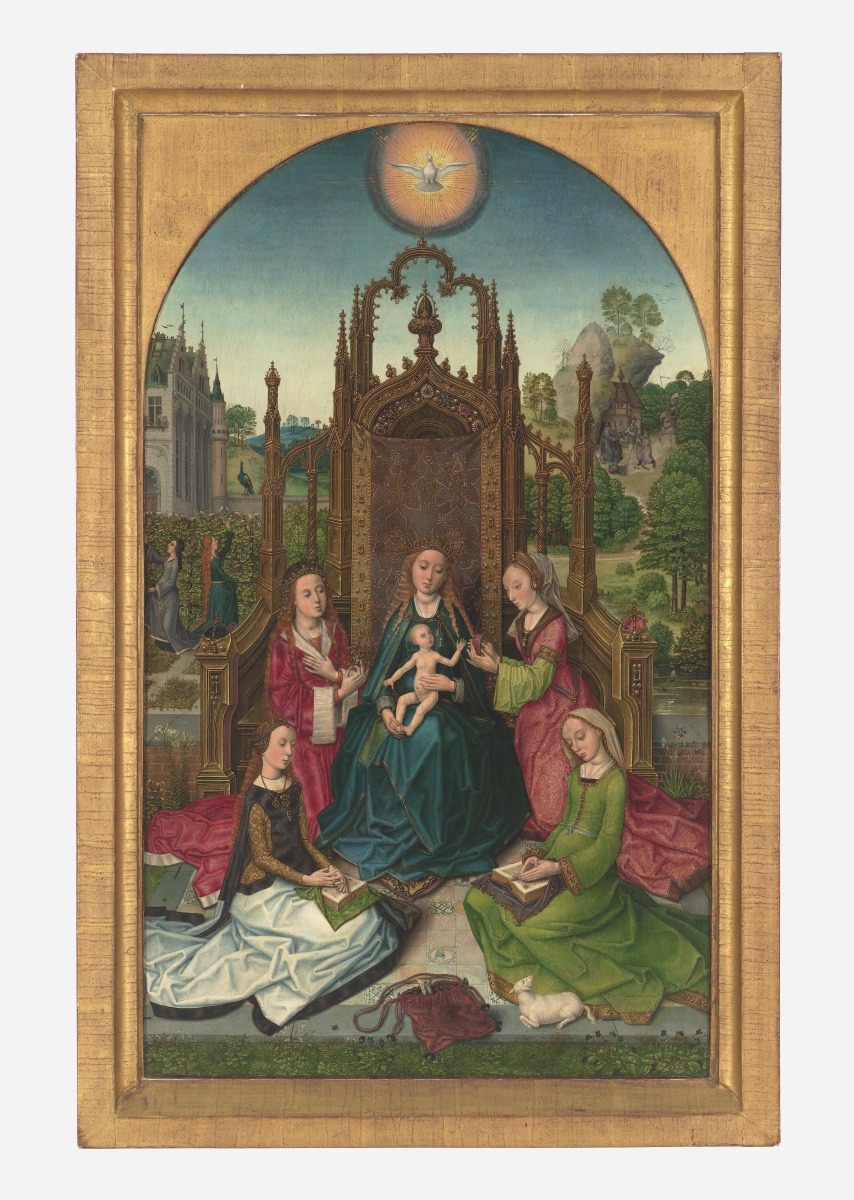
Madonna and Child Enthroned with Saints (Primary Title)
Bruges Master of 1499, Flemish, 15th century (Artist)
Representations of the Madonna with female saints were popular in the 15th-century Bruges. Here, Saints Catherine of Alexandria, Dorothy of Cappadocia, Barbara, and Agnes, all of whom lived in different places and at different times, join Christ and the Virgin in a heavenly paradise that resembles the earthly world. This is the martyred saints’ reward, meant to inspire similar Christian devotion in the viewer.
In this charming ideal vision of a world without sin, the artist inserted many details symbolizing the ultimate virtue of the Virgin and her entourage. For example, the rosebushes the maidens tend in the garden (center left) stand for the Virgin’s purity. St. Bernard of Clairvaux called the Virgin the “rose without a thorn”; she is also compared to the “enclosed garden” in the Song of Songs [Solomon 4:12], an elaborate love poem that Christians in the Middle Ages interpreted as an allegory of the Virgin. The peacock seen in the background (left) was a common Christian symbol of immortality and of Christ’s Resurrection; legend held that the flesh of a peacock never decayed.
Little is known of this artist, but he was certainly both ambitious and skilled in bringing complicated and abstract religious concepts to vivid and believable life.
Primitifs Flamands Anonymes, Groeningemuseum, Bruges, Belgium, June 14 - September 21, 1969
Loan Exhibition of Flemish and Belgian Art, Royal Academy, London, 1927
L’Art Belge Ancien et Moderne, Musée des Beaux Arts and Kunsthalle, Bern, Switzerland, March 27 – June 7, 1926
Some object records are not complete and do not reflect VMFA's full and current knowledge. VMFA makes routine updates as records are reviewed and enhanced.

